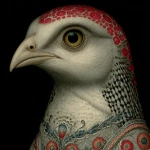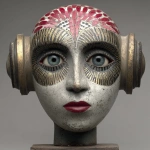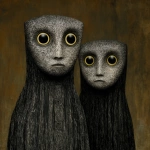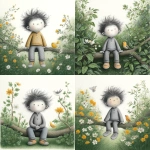Explore the Best AI Image Gallery

Weaving Innovation: How Wearable Tech is Transforming the Creative Landscape
The realm of creativity has always been a fertile ground for innovation, constantly evolving with the advent of new tools and technologies. Today, wearable technology stands at the forefront of this evolution, poised to reshape the creative landscape in profound ways. From artists exploring novel mediums to designers pushing the boundaries of interactive experiences, wearables are empowering creators to think outside the box and unlock unprecedented levels of artistic expression.
A New Canvas for Artistic Expression
Wearable technology is providing artists with an entirely new canvas for their work. Imagine a painter whose brushstrokes are translated into light patterns projected onto a dancers costume, or a sculptor who shapes virtual clay using hand gestures captured by haptic sensors. These are just glimpses of the possibilities that wearable tech offers for merging the physical and digital realms in artistic creation.
One compelling example is the rise of interactive installations driven by wearables. Attendees at these exhibitions can don special garments or accessories equipped with sensors, allowing their movements to directly influence the artworks form, color, or sound. This immersive experience blurs the lines between observer and participant, transforming passive spectators into active contributors to the creative process.
Beyond Visual Arts: Wearables Expand Creative Horizons
The impact of wearables extends far beyond visual arts. Musicians are experimenting with instruments that respond to body movements, allowing them to create dynamic and personalized performances. Writers can tap into wearable keyboards or voice recognition software to capture their ideas on the go, while designers can utilize augmented reality overlays to visualize and manipulate 3D models in real-time.
Wearables: A Catalyst for Collaboration
Perhaps one of the most exciting aspects of wearable technology is its potential to foster collaboration. Imagine a team of architects collaborating on a building design, each wearing haptic gloves that allow them to feel and manipulate virtual blueprints in sync with each other.
This immersive sense of shared space can break down geographical barriers, enabling creatives from different backgrounds and locations to work together seamlessly, regardless of distance.
Navigating the Ethical Landscape
As with any emerging technology, wearable tech raises important ethical considerations. The collection and use of personal data through wearables must be handled responsibly and transparently. Moreover, it is crucial to ensure that access to these technologies is equitable, avoiding the creation of further digital divides.
Striking a balance between innovation and ethical responsibility will be paramount as wearable technology continues to permeate the creative industry.
Future Trends: The Evolution Continues
The future of wearable tech in the creative realm is brimming with possibilities. Advancements in artificial intelligence (AI) are poised to further enhance creative workflows, enabling wearables to learn from user preferences and generate personalized content.
We can anticipate increasingly sophisticated haptic feedback systems that provide a richer sense of touch within virtual environments, blurring the lines between the real and digital even further.
The convergence of wearable technology with augmented reality (AR) and virtual reality (VR) will create immersive experiences that redefine how we consume and interact with creative content. Imagine attending a concert where AR overlays bring the stage to life with interactive visuals, or stepping into a VR art gallery where sculptures respond to your presence.
The possibilities are truly endless, and wearable technology is set to remain at the forefront of this exciting evolution in creativity for years to come.

](https://images.ai-img.art/thumbnails/150/065f0b2e150f4cc43a9da80d822e8a385e9e50f2f6ff2cc3be7639cfd74952da.webp)





























](https://images.ai-img.art/thumbnails/150/1b14bd827b740aca3b0d8efa7ed6865e28c7c8382172f3f565c96b6c5f64ca78.webp)

](https://images.ai-img.art/thumbnails/150/6a9bb97a3f1c45ab616724cc54bca010cbcc2d658a9c0e4581aa181c88046444.webp)











](https://images.ai-img.art/thumbnails/150/45237dfa7845159b860f9e234c48c4418e8efcb52b4d15da4493f46e6a99f337.webp)

](https://images.ai-img.art/thumbnails/150/6a577517a359cd2bc6212d6b0f12c7cab660841317023550a76c84f409c7f2d0.webp)

